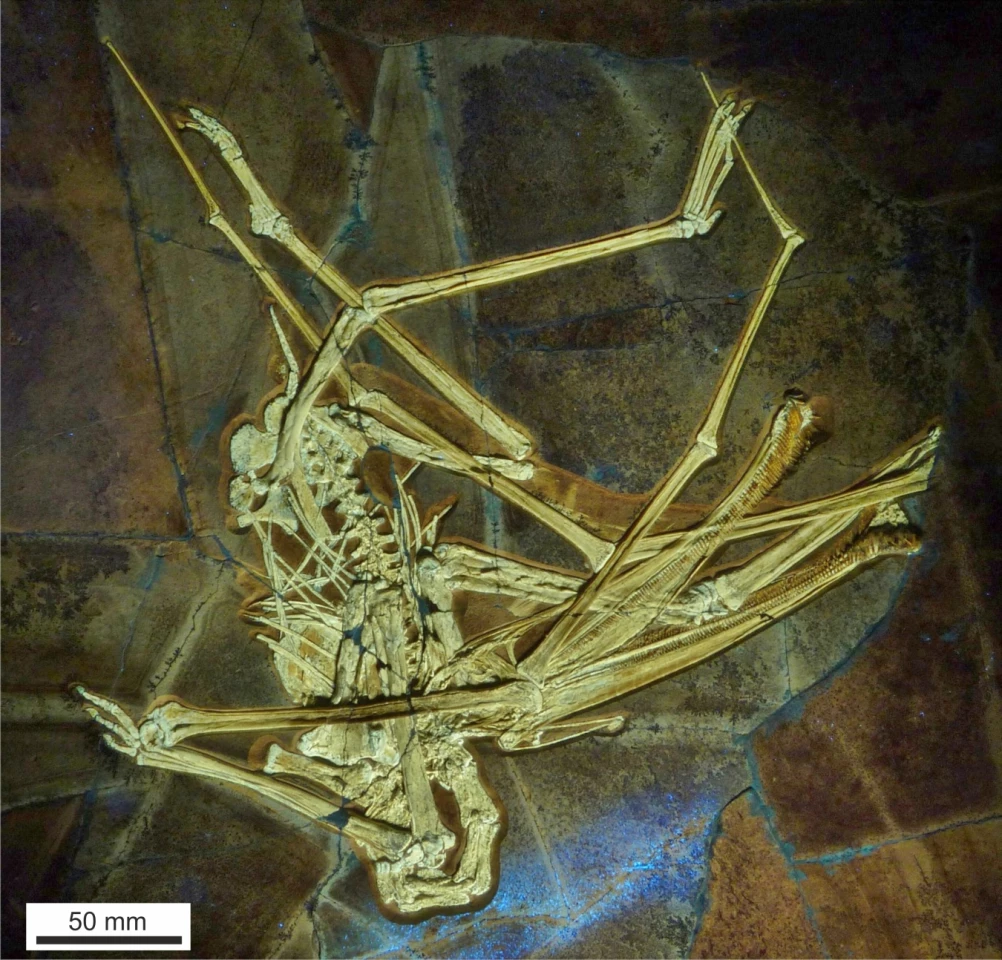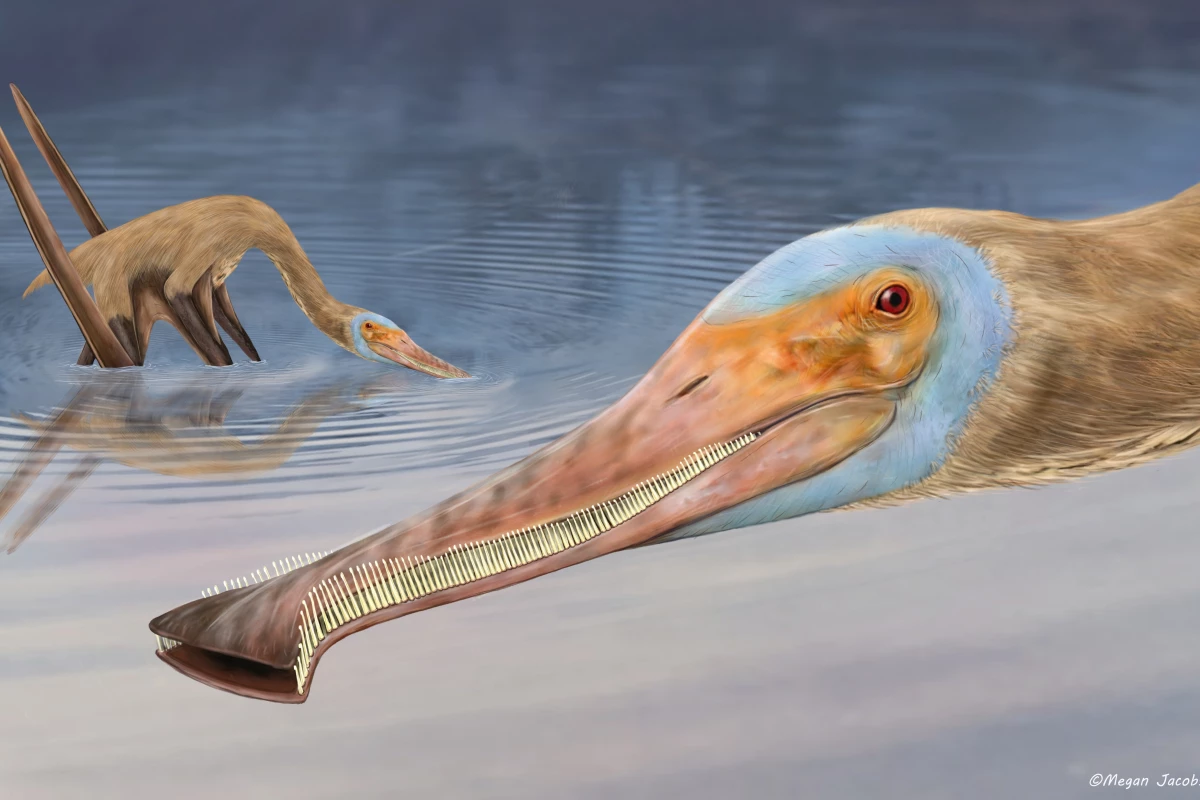Back in 2021, we heard about a pterosaur that had a mouth full of big, sharp teeth. Well, scientists have now discovered a pterosaur that went to the other extreme, as it used over 400 small, hooked teeth to catch its prey.
A very well-preserved almost-complete fossilized skeleton of the small creature was initially unearthed in a Bavarian limestone quarry, and was more recently analyzed by a team of paleontologists from Britain, Germany and Mexico.
The animal was a member of the Ctenochasmatidae family of pterosaurs, and has been named Balaenognathus maeuseri. This monicker roughly translates to "whale mouth" plus it also pays tribute to Matthias Mäuser, a study co-author from Germany's Naturkunde Museum Bamberg (Bamberg Natural History Museum) who passed away during the course of the research.

"The jaws of this pterosaur are really long and lined with small fine, hooked teeth, with tiny spaces between them like a nit [louse] comb," said lead scientist Prof. David Martill, from the University of Portsmouth. "The long jaw is curved upwards like an avocet and at the end it flares out like a spoonbill. There are no teeth at the end of its mouth, but there are teeth all the way along both jaws right to the back of its smile."
It is believed that the reptile fed as it waded through shallow lagoons, scooping up water with the spooned end of its mouth, then forcing that water out through the narrow gaps between its interlocking teeth. In this fashion, it would filter out small shrimp and other prey, which it would then swallow.
Present-day baleen whales – along with ducks and flamingos – feed in a similar manner. The hooks on the ends of the pterosaur's teeth would have helped snag the shrimp, keeping them from getting out between the teeth. This is the first time that such hooks have been seen on a pterosaur.
"This pterosaur had teeth in the upper and lower jaw, which are a mirror image of each other," said Martill. "There is one other pterosaur with more teeth – Pterodaustro from Argentina – but it has stubby teeth in its upper jaw and even longer teeth in its lower jaw, so this new specimen is very different from other ctenochasmatids."
A paper on the research was recently published in the journal Paläontologische Zeitschrift.
Source: University of Portsmouth





